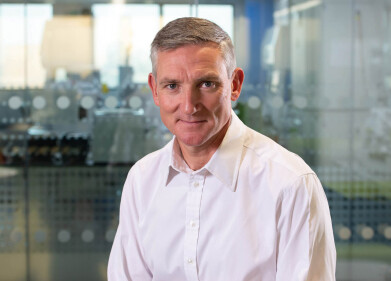News
Cell Movement Discovery Points to Opportunities in Therapeutics
Jan 27 2020
Many cells in our body are constantly changing shape and moving within our tissues; wound healing and the immune system, for example, depend on migrating cells. Uncontrolled cell migration, however, is a hallmark of metastasis during the development of malignant cancers, so cell migration must be very tightly regulated.
The driving force for cell migration is produced by a protein called actin which act as building blocks by polymerises into rod-like filaments that push the leading edge of the cell forward. The polymerisation of the actin filaments must be balanced by depolymerisation of the filaments at the other end.
Scientists at the University of Helsinki, Finland and Institut Jacques Monod, France, have identified a molecular machinery which drives rapid depolymerisation of actin filaments and recycles the resulting actin monomers for a new round of polymerisation. Two proteins, cyclase-associated protein and cofilin, work together in this.
“By using X-ray crystallography and computer simulations, we could actually see the atomic details of how these two proteins embrace actin filaments and disassemble them into their building blocks. One of the most exciting parts of the project was to see under the microscope how actin filaments suddenly began disappearing when we introduced these two proteins into their vicinity,” says PhD student Tommi Kotila, the lead author of the study from HiLIFE Institute of Biotechnology, University of Helsinki.
In malignant tumours, cells go haywire in their movements, because their migration machinery is not properly controlled. Because, in cancer cells, the regulation of cyclase-associated protein is often defective, the atomistic structure of this machinery may open new avenues for developing therapeutics to inhibit cell migration in cancer.
“This is a great contribution to our understanding of the basic principles of cell migration. It also helps us understand the molecular basis of the uncontrolled migration of cancer cells,” says academy professor Pekka Lappalainen from the Institute of Biotechnology.
The study was carried out as a collaboration between the laboratories of Pekka Lappalainen and Ilpo Vattulainen at the University of Helsinki, and Guillaume Romet-Lemonne and Antoine Jégou at the Jacques Monod Institute, Paris, France.
Article:
Kotila T, Wioland H, Enkavi G, Kogan K, Vattulainen I, Jégou A, Romet-Lemonne G, Lappalainen P. Mechanism of synergistic actin filament pointed end depolymerization by cyclase-associated protein and cofilin. Nature Communications (2019). DOI: 10.1038/s41467-019-13213-2
Digital Edition
Lab Asia Dec 2025
December 2025
Chromatography Articles- Cutting-edge sample preparation tools help laboratories to stay ahead of the curveMass Spectrometry & Spectroscopy Articles- Unlocking the complexity of metabolomics: Pushi...
View all digital editions
Events
Jan 21 2026 Tokyo, Japan
Jan 28 2026 Tokyo, Japan
Jan 29 2026 New Delhi, India
Feb 07 2026 Boston, MA, USA
Asia Pharma Expo/Asia Lab Expo
Feb 12 2026 Dhaka, Bangladesh



















